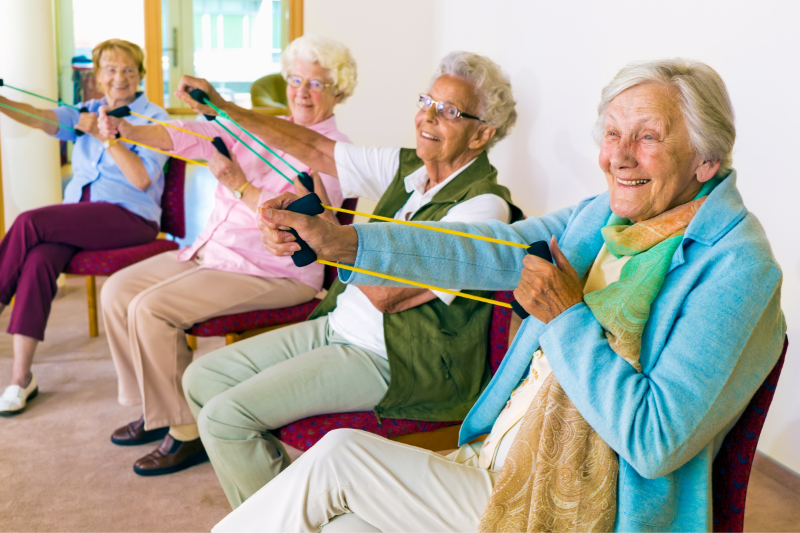Staying Fit in Your Senior Years
Senior living doesn’t look like it used to. Gone are the days when retirees were faced with day after day of wheelchairs and television reruns. Today, even in assisted living, age doesn’t need to be a barrier to staying active and healthy. Staying fit in your senior years may not look like it did when you were in your prime, but there are more options out there than you think.
We’ve gathered some of the simplest and easiest ways for you to stay in good physical health as you age. It’s never too late to improve your fitness levels. Regular exercise can help improve your mood, reduce muscle and joint pain, slow down osteoporosis, and even boost your memory.’

Always Talk to Your Doctor First
Remember to check with your doctor before you start any new diet or exercise program. If you have a chronic condition such as heart disease, diabetes, high blood pressure, or pulmonary disease, you may need to take extra precautions to exercise safely.
Your doctor can also likely recommend specific local resources such as physical therapists or personal trainers who specialize in working with senior citizens.
Low-Impact Exercise for Seniors
When you’re choosing an exercise program to try, the key phrase to look for is “low impact.” Low-impact exercise is still healthy but puts less strain on your heart, joints, and muscles. Because low-impact exercise typically involves having at least one foot on the ground at all times, it is also a better choice for those with balance or mobility problems.
Even low-impact exercise can get your heart pumping enough to make a big difference. Just taking a simple walk every day benefits your heart, lung, and joint health. Evidence suggests that even brain health and memory improve with regular low-impact exercise.
Other forms of fun, low-impact, senior-appropriate exercise that you may want to explore include:
- Water aerobics or synchronized swimming
- Dance lessons
- Cycling on a stationary bike
- Swimming laps
- Gardening
- Resistance training (weight lifting or resistance bands)
- Golf
- Tai Chi (shadow boxing)
Remember that if any of these are new to you, it’s important to start by getting help from an experienced teacher. Even with low-impact exercise, it’s possible to injure yourself if you don’t know what you’re doing.
Mobility Considerations
If you use a cane or walker, or even if you’re in a wheelchair, staying fit is still for you! While mobility limitations do put some forms of exercise beyond your reach, you may be very surprised by what is still feasible.
Often, seniors with mobility issues enjoy what is called chair exercise. Chair exercise means an exercise routine that you do while seated.
Many assisted living residences and senior centers offer chair-based exercise classes including aerobics, yoga, pilates, and sometimes even weight lifting or dance. No matter what your level of fitness, you can find a way to get moving and start reaping the benefits today.
Exercise for Mental Health
In senior living, our watchword is always to promote the greatest level of independence possible. Strengthening your muscles, bones, and joints through a regular fitness program helps extend your years of mobility and overall health.
But on top of all the physical benefits, exercise has major mental health advantages. Seniors with a fitness routine have lower rates of depression, better brain health, and fewer feelings of isolation. Even some dementia symptoms improve with appropriate exercise.
Are you interested in learning more about how assisted living could help you improve your physical health and fitness? Contact us today to chat about physical enrichment at New Haven Assisted Living.